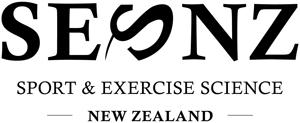2020 SESNZ Annual Conference factors associated with concussion (sex, age, and concussion history) were also examined. Discussion: Data analysis regarding the utility of the headset is in-progress, but general impressions are that athletes demonstrated several types of distinct EEG patterns or artefacts, that signal strength was often weakened after injury and became stronger as the athlete recovered, and that male athletes showed higher average SSVEP signal strength than female athletes at all time points. No differences were observed for age or history of concussion. Take-home message: SSVEPs (in conjunction with physician assessment) can be useful in identifying concussive damage and recovery.
33. The effect of passive heat therapy on body composition and isometric muscle strength in patients with severe lower-limb osteoarthritis 1,2
Roxburgh, B.H.; 1Campbell, H.; 2Cotter, J.D.; 1Reymann, U; 1Gwynne-Jones, D.; 3Williams, M.J.A.; 1Thomas, K.N. 1
Department of Surgical Sciences, Otago Medical School School of Physical Education, Sport and Exercise Sciences 3 Department of Medicine, Otago Medical School, University of Otago, Dunedin 2
Introduction: Osteoarthritis is a degenerative joint condition, characterised by reduced muscle strength, pain and impaired mobility. The knee and hip are the two most common sites, making traditional lower-limb weightbearing exercise painful. The purpose of this study was to examine the effects of passive heat therapy (PHT) as an
exercise mimetic, compared to home-based exercise (HBE) on body composition and isometric muscle strength. Methods: This is a randomised controlled trial in which nineteen patients (12 female; age = 66 ± 8 y; body mass index = 32.1 ± 8.2 kg.m-2) scheduled for hip (n=9) or knee (n=10) arthroplasty were randomised to twelve weeks HBE (n=10; light-resistance exercises; 2 x 8-12 reps of 10 exercises; 3 x per week) or PHT (n=9; 20-30 min of warmwater immersion at ~40°C; combined with frequency matched post-immersion light-resistance exercises). Body composition (bioimpedance analysis) and isometric muscle strength of lower-limb muscle groups (with a hand-held dynamometer) were measured at baseline and end of intervention. Presented data are from a preliminary analysis; therefore no inferential statistics were performed. Results: Muscle mass increased in the PHT (+2.1 ± 4.2 kg) and HBE (+0.9 ± 2.6 kg) groups, while body fat percentage decreased (-3.4 ± 7.9%; -1.8 ± 5.0%). Knee extensor and flexor strength increased by 1-20% on the OA and non-OA sides with PHT, and 4-11% with HBE. Hip abductor and extensor strength increased by 13-32% on the OA and non-OA sides with PHT, but only hip abductor strength increased with HBE (14-32%). Discussion and take-home message: Twelve weeks of passive heat therapy or home-based exercise increased muscle mass, reduced body fat mass and increased isometric muscle strength in patients with severe lower-limb osteoarthritis. This may offer benefits in the prehabilitation of patients with severe lower-limb osteoarthritis.
Coaching
34. Considerations in developing adaptable and skilful athletes 1
Button, C.; 2Seifert, L.; 3Chow, J-Y.; 4Araujo, D.; 5Davids, K. 1
University of Otago University of Rouen 3 Nanyang Technological University 4 University of Lisbon 5 Sheffield Hallam University 2
Introduction: How can coaches and sport scientists work collaboratively to develop adaptable and skilful athletes? In this presentation I will describe key principles of the Ecological Dynamics theoretical framework and suggest how they can be incorporated to help design more effective practice environments. I will refer to recent examples from water safety and climbing research to illustrate these principles. Learners need to be encouraged to explore representative practice environments that facilitate skill transfer to different competition environments. With the study of human movement now bridging many subdisciplines, including motor development, psychology, biology, and physical therapy, the new textbook Dynamics of Skill Acquisition (Button et al., 2020: Second Edition) JSES | https://doi.org/10.36905/jses.2020.03.01
presents a comprehensive model for understanding how coordination patterns are assembled, controlled, and acquired. Take home message: Coaches are practice designers who can unlock the capacity for athletes to become more adaptable and skilful Additional Information: To coincide with new textbook published in 2020. See discount information in conference pack. www.booktopia.com.au/dynamics-of-skill-acquisition-2edchris-button/book/9781492563228.html 35. Community rugby coaches’ perceptions and practices related to Small Blacks education programme and tools package: what are the barriers and facilitators to programme implementation? 1
Bussey, M.; 1Reily, E.; 2 Salmon, D.
1
University of Otago, School of Physical Education Sport and Exercise Science 2 New Zealand Rugby Union Introduction: Standardised structured warm-ups such as the FIFA U11 have been shown to successfully reduce injuries in young players. The success of this programme
32





